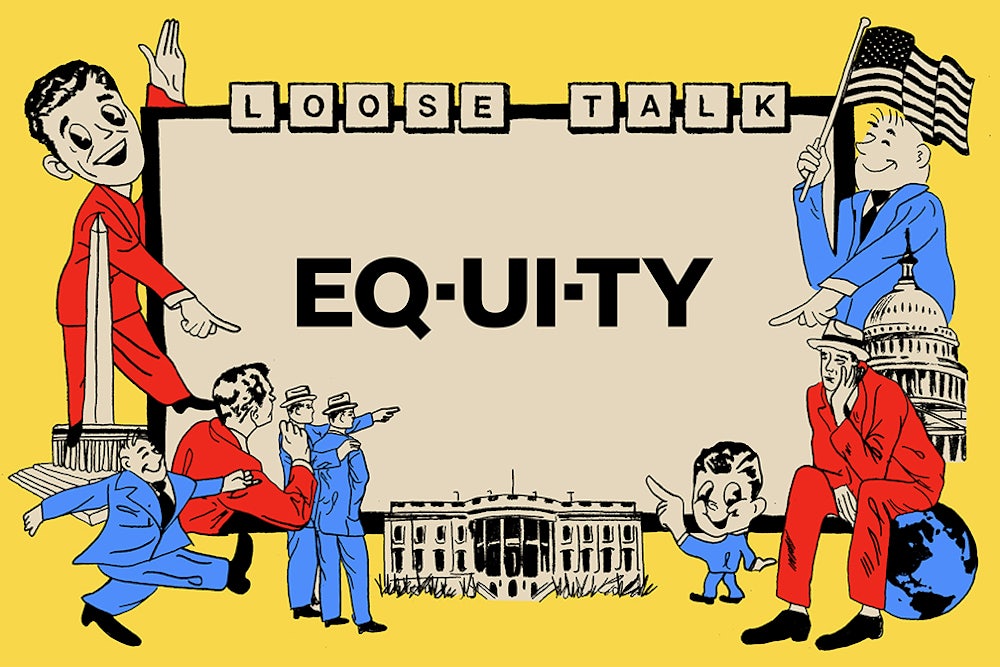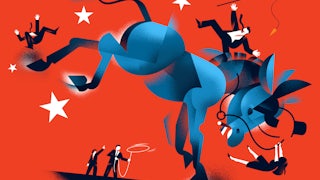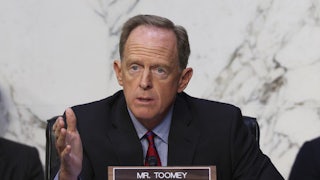Three people of different heights stand on identical crates to watch a baseball game from beyond the outfield wall. As the two tallest spectators gaze contentedly over the fence, the shortest slumps in dejection, his nose buried in the fence lumber. This panel in a widely distributed infographic is meant to illustrate “equality,” because everyone, tall or short, has been given the same crate. The second panel, depicting “equity,” shows the short kid exuberant; now, he stands on one more crate than his taller companions. The cartoon expresses a widespread truism among progressive nonprofits, philanthropists, and the federal government: “equality,” or sameness, is out, and “equity,” or fairness, is in.
A few preliminary questions: What is the middle kid even doing here? What is the baseball stadium supposed to represent in this allegory? And who are all the paying spectators in the grandstand—what’s their deal? The cartoon’s argument derives from its unexamined assumption that “equality” means ameliorative action applied without regard to individual differences. Words being subjective things, it well might mean this to some people—but for progressives, the problem is that this definition of equality echoes decades of conservative bootstrapping rhetoric against the sort of social spending that liberals might otherwise support. “Instead of focusing on equality of outcomes,” said the conservative budget hawk Paul Ryan during the Obama years, “we should be focusing on equality of opportunity.” This difference—between an enforced, bureaucratic sameness of social benefits, regardless of one’s abilities and needs, and a “level playing field” that allows everyone to begin at the same place—is essentially the same as that expressed by the cartoon, where inefficient homogeneous outcomes are opposed to fairer, individualized opportunities.
Nonetheless, “equity” is a bugbear for some on the right, who treat it as a synonym for racial quotas or as a creature of “wokeness,” newfangled jargon meant to flatter liberal whites. Neither claim holds much water, though, since the White House’s current definition of equity, “the consistent and systematic fair, just, and impartial treatment of all individuals,” sounds like a perfectly valid definition of “equality,” at least according to my dictionary. The biggest question that the newfound popularity of “equity” raises is what “equality” therefore is—and what, if anything, is wrong with it.
Equality, to venture a definition, is the equal right, but also an equal chance, to live in peace regardless of one’s class, race, religion, and gender identity. The fact that so many institutions and politicians prefer equity is a warning sign that it is the more anodyne alternative to “equality”—one by-product, perhaps, of conservatives’ long campaign to transform political language to disavow universal social equality and celebrate individual “opportunity” (see, for other successful examples, the “death tax” or the “free market”).
Meanwhile, as with a lot of progressive buzzwords, talking about “equity” in the right way can seem to take the place of doing much about it. Of course, the same can be true of any word—even “equality.” This brings us back to the illustration, and what it leaves out. To make a more equal or (if you insist) equitable society, some risks will have to be run, some people’s ill-gotten wealth will have to be returned, some things will need to be broken. We’re going to have to do something, in short, about those ticket-holders sitting comfortably in the stands.






